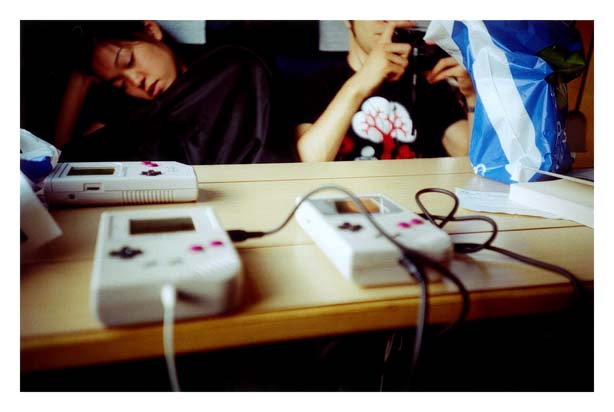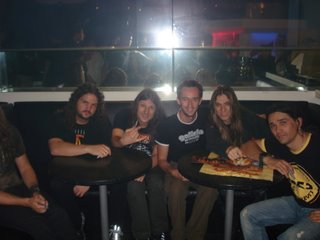En la segunda mitad del siglo XIX, tras la primera y segunda guerra del opio, surgió un flujo de emigración china a Suramérica, forzada por los colonos ingleses. Muchos de estos chinos, provenientes en su mayor parte de las provincias del sur, especialmente Guandong, terminaron por instalarse en el Caribe, Centroamérica, y también por Norteamérica, principalmente Vancouver, donde el 30% de la población actual es de origen asiático, y California, contratados en su mayor parte para la construcción de las vías férreas. Perú también acogió un gran numero de emigrantes chinos, rondando los 100.000 sólo en la capital del país, Lima.
Dos de mis compañeras en la oficina comercial en Hong Kong eran descendientes de emigrantes chinos a Suramérica. Habían nacido en Perú y Panamá. Una vez charlando con Angélica, descendiente de chinos asentados en Perú, me hablaba del impacto de la diáspora china en el país quechua. Por poner un ejemplo, me comentaba como en Perú a los restaurantes chinos se les conoce como chifas, que viene del cantonés chi faan (饎飯), literalmente comer arroz. Alberto Fujimori, más popularmente conocido como el chino entre los peruanos, ejerció la presidencia del aquel país entre 1990 y 2000. A pesar de su cariñoso apodo, Fujimori era hijo de japoneses.
Y es que además de este flujo migratorio chino, también hubo un éxodo migratorio japonés a Suramérica, especialmente hacia Brasil. Brasil cuenta con la mayor comunidad de japoneses en el extranjero, rondando el millón y medio de personas. A estos descendientes de japoneses nacidos fuera de Japón se les conoce como nisei, o segunda generación. De igual modo que ocurre con hijos de españoles emigrados a Suramérica, muchos deciden retornar a la tierra de origen de sus padres para probar fortuna. Pero a pesar de los vinculos que se mantienen vivos a través de la educación que se transmite de padres a hijos, la adaptación no resulta sencilla, dificultada aún más por las numerosas trabas culturales que les inflige la sociedad japonesa, desconcertada por la desconexión entre su aparencia nipona exterior y su distinta forma de ser o carácter, que difiere de los rigurosos códigos japoneses de conducta.
Sobre este último punto, me viene a la mente el libro "Estupor y temblores" de Amelie Nothomb que cuenta la experiencia de la hija de un embajador belga en Japón. Nacida y criada en sus primeros años de vida en el país del Sol Naciente, la joven decide volver al país nipón tras finalizar sus estudios universitarios, para realizar prácticas en una importante empresa multinacional. El libro, plagado de desajustes y desatinos, narra la espiral de destrucción y degradación en la que se ve envuelta esta antiheroe que terminará como limpiadora de lavabos.
Volviendo a la mezcolanza nipona-brasileña, estos días, quizás sobresaturado de tanto pop y rock, he comenzado a curiosear radios online en busca de latin jazz y bossanova. Sintonizando Radio Guyarama, he descubierto la suave voz de Lisa Ono, nisei brasileña. Hacía tiempo que no escuchaba algo tan curioso como bossanova cantada en japonés, sonando además con perfecta melodicidad y armonía. Quizás sea por la similitud de dicción entre el portugués y el japonés, o quizás sea la aterciopelada voz de Lisa Ono. Sublime.
Lisa Ono versioneando "Ano hi ni kaeritai" (quiero volver a esos días) de Tokunaga Hideaki
Dos de mis compañeras en la oficina comercial en Hong Kong eran descendientes de emigrantes chinos a Suramérica. Habían nacido en Perú y Panamá. Una vez charlando con Angélica, descendiente de chinos asentados en Perú, me hablaba del impacto de la diáspora china en el país quechua. Por poner un ejemplo, me comentaba como en Perú a los restaurantes chinos se les conoce como chifas, que viene del cantonés chi faan (饎飯), literalmente comer arroz. Alberto Fujimori, más popularmente conocido como el chino entre los peruanos, ejerció la presidencia del aquel país entre 1990 y 2000. A pesar de su cariñoso apodo, Fujimori era hijo de japoneses.
Y es que además de este flujo migratorio chino, también hubo un éxodo migratorio japonés a Suramérica, especialmente hacia Brasil. Brasil cuenta con la mayor comunidad de japoneses en el extranjero, rondando el millón y medio de personas. A estos descendientes de japoneses nacidos fuera de Japón se les conoce como nisei, o segunda generación. De igual modo que ocurre con hijos de españoles emigrados a Suramérica, muchos deciden retornar a la tierra de origen de sus padres para probar fortuna. Pero a pesar de los vinculos que se mantienen vivos a través de la educación que se transmite de padres a hijos, la adaptación no resulta sencilla, dificultada aún más por las numerosas trabas culturales que les inflige la sociedad japonesa, desconcertada por la desconexión entre su aparencia nipona exterior y su distinta forma de ser o carácter, que difiere de los rigurosos códigos japoneses de conducta.
Sobre este último punto, me viene a la mente el libro "Estupor y temblores" de Amelie Nothomb que cuenta la experiencia de la hija de un embajador belga en Japón. Nacida y criada en sus primeros años de vida en el país del Sol Naciente, la joven decide volver al país nipón tras finalizar sus estudios universitarios, para realizar prácticas en una importante empresa multinacional. El libro, plagado de desajustes y desatinos, narra la espiral de destrucción y degradación en la que se ve envuelta esta antiheroe que terminará como limpiadora de lavabos.
Volviendo a la mezcolanza nipona-brasileña, estos días, quizás sobresaturado de tanto pop y rock, he comenzado a curiosear radios online en busca de latin jazz y bossanova. Sintonizando Radio Guyarama, he descubierto la suave voz de Lisa Ono, nisei brasileña. Hacía tiempo que no escuchaba algo tan curioso como bossanova cantada en japonés, sonando además con perfecta melodicidad y armonía. Quizás sea por la similitud de dicción entre el portugués y el japonés, o quizás sea la aterciopelada voz de Lisa Ono. Sublime.
Lisa Ono versioneando "Ano hi ni kaeritai" (quiero volver a esos días) de Tokunaga Hideaki
Lisa Ono interpretando junto a Miúcha uno de los grandes temas de la canción popular brasileña, "Águas de Março"








